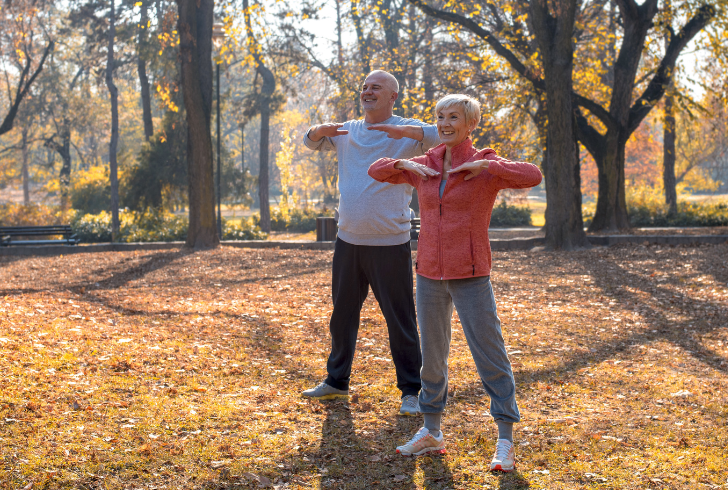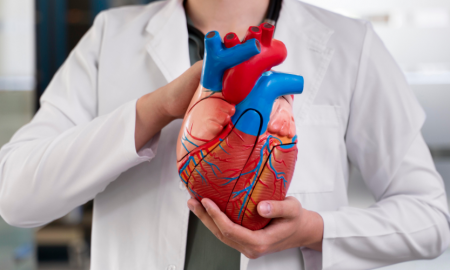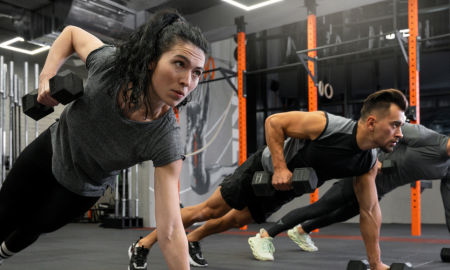
Why a Mediterranean Diet and Exercise Slow Bone Loss in Seniors

Bone health isn’t just a concern for the elderly—it’s something that starts to matter the moment the body begins to lose density with age. A new study sheds light on how a targeted weight-loss lifestyle, built around a Mediterranean-style diet and regular movement, can slow down the natural decline in bone strength, especially in older women with metabolic conditions.
Why Bone Health Declines With Age
As the body gets older, it naturally begins to lose bone density and mineral content. This decline often leads to a higher risk of fractures and osteoporosis, particularly among individuals with underlying metabolic issues like obesity. With the population aging rapidly, age-related bone deterioration has become a growing concern—not just for individuals, but for public health systems worldwide.
Osteoporotic fractures often result in reduced mobility and long-term disability, which places a significant strain on both the affected person and the healthcare infrastructure. The challenge? Finding effective lifestyle solutions that help protect bone health while still promoting necessary weight loss in older adults.
The PREDIMED-Plus Clinical Study

Instagram | wirestock | To improve health, seniors were guided to physical activity.
A large clinical trial in Spain, called the PREDIMED-Plus study, explored how diet and physical activity affect bone health over time. The study involved over 6,800 adults between the ages of 55 and 75. All participants had metabolic syndrome and were either overweight or obese. Researchers carried out the trial across 23 medical centers.
Participants were divided into two groups:
1. Control group
Followed a traditional Mediterranean diet without calorie restrictions and received no guidance on physical activity.
2. Intervention group
Advised to follow a Mediterranean diet with a 30% reduction in daily energy intake and encouraged to increase physical activity in line with WHO recommendations for seniors.
Behavioral support was provided throughout, helping individuals stay on track with their dietary and activity changes.
What the Study Revealed About Bone Changes
Over the course of three years, researchers used DXA imaging to monitor changes in participants’ bone composition—and the data told a clear story:
Those following the intervention plan lost more weight at both the one-year and three-year checkpoints.
Among older women in the study, the lumbar spine (specifically vertebrae L1 through L4) showed notable gains in bone mineral density.
Increases in bone mass were especially visible in areas like the total femur and femoral trochanter—again, primarily in women.
Overall, women appeared to benefit more from the intervention across every key metric, with more consistent and measurable improvements than men.
These outcomes remained stable even after accounting for other influencing factors like age, smoking habits, education level, and pre-existing medical conditions.
Why the Mediterranean Diet Stands Out
The Mediterranean diet is more than just a popular eating style. It’s based on whole foods, healthy fats, moderate protein, and plenty of fruits and vegetables. When paired with regular movement and a slight calorie deficit, it can offer two key benefits. It helps with weight loss and also supports bone strength in older adults.
Some possible reasons for this benefit include:
– Nutrient-rich foods that support bone formation (like calcium, magnesium, and vitamin D)
– Anti-inflammatory properties from plant-based ingredients and omega-3 fats
– Stable blood sugar and hormone regulation, which may reduce bone degradation
How Physical Activity Strengthens the Results

Instagram | Drazen Zigic | Even moderate activities like walking demonstrably improve bone structure and density.
Adding physical activity—especially weight-bearing exercises—played a critical role in enhancing the positive effects of the diet.
Staying active does more than just keep joints moving—it encourages bone renewal and preserves muscle mass, both of which are key to staying balanced and avoiding falls.
What’s striking is that participants didn’t need to dive into rigorous training programs. Simple, consistent movement—like brisk walking, gentle strength exercises, or casual aerobic activity—was enough to gradually strengthen bone architecture and improve density.
Implications for Aging Populations
Although the study centered on individuals with metabolic syndrome, the takeaways go beyond that group. Many older adults experience overlapping issues: reduced mobility, suboptimal diets, and creeping weight gain. These results reinforce a broader point—steady lifestyle shifts, even modest ones, can make a real difference in safeguarding bone health as we age.
The study also presents a clear path forward. Pairing a structured eating plan with regular physical activity can strengthen bones without feeling too restrictive or difficult to maintain.
A Simple Strategy With Long-Term Impact
Building and preserving bone strength doesn’t call for sweeping lifestyle overhauls. The study points to something far more approachable: consistent effort through good nutrition and regular movement can lead to meaningful, long-term gains.
For aging adults—particularly women navigating weight concerns or metabolic challenges—a slightly lower-calorie Mediterranean-style diet combined with steady physical activity can make a measurable difference.
The payoff goes beyond bone health. This kind of daily routine supports mobility, preserves independence, and helps maintain a higher quality of life over time.
More in Lifestyle
-
`
Why the Heart Is Slightly to the Left and Not Perfectly Centered
The heart is one of the most vital organs in the body, yet its placement often raises questions. Many assume it...
August 16, 2025 -
`
Ozzy Osbourne’s Most Shocking and Beloved Pop Culture Moments
Few figures in rock history have carved out a legacy as vivid and unpredictable as Ozzy Osbourne. Beyond his groundbreaking work...
August 10, 2025 -
`
Are Mono Diets Worth It – or Just a Dangerous Trend?
As summer brings on the pressure to slim down fast, the internet lights up with diet trends promising instant results. One...
August 3, 2025 -
`
Why Motivation Is Essential for Sustainable Fitness Success
Motivation isn’t something that shows up when it’s convenient—it’s something that needs to be built, shaped, and sustained. Many people struggling...
July 27, 2025 -
`
The Mystery of Human Body Parts That Science Still Can’t Solve
The human body is a patchwork of evolutionary choices, quirks, and mysteries. From skeletal structure to the tiniest gland, everything tells...
July 18, 2025 -
`
Want Better Memory? This Diet Could Help Keep Your Brain Sharp
Losing focus, memory lapses, or slower thinking—these aren’t just normal parts of aging. While cognitive changes do happen over time, lifestyle...
July 5, 2025 -
`
The Truth About Health Tracking Apps and Their Impact on Wellness
Scroll through social media or browse the App Store, and you’ll likely spot dozens of health tracking apps. They promise everything—from...
June 29, 2025 -
`
New Study Reveals Alzheimer’s Affects the Entire Body
Most people associate Alzheimer’s with memory loss and cognitive decline, assuming its impact stays confined to the brain. But new findings...
June 21, 2025 -
`
The One Simple Habit Mark Cuban Credits for His Success
Success doesn’t come from shortcuts or luck—it’s built on habits that stand the test of time. Mark Cuban, the outspoken billionaire,...
June 14, 2025









You must be logged in to post a comment Login